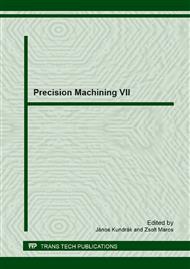p.497
p.501
p.505
p.511
p.519
p.527
p.533
p.539
p.547
On the Multi-Level Unit Load Formation Model
Abstract:
One of the most important issues in storage and transport processes is the formation of unit loads. Our main goal is to investigate the homogeneous and multi-level unit load formation cases. We give a model involving the major factors and parameters of the unit load formations. The optimization process is introduced using the formulated objective functions and constraints related to the basic tasks. The aim of the optimization process is to maximize the volume of goods that can fit into the unit load formation equipment.
Info:
Periodical:
Pages:
519-526
Citation:
Online since:
October 2013
Authors:
Price:
Сopyright:
© 2014 Trans Tech Publications Ltd. All Rights Reserved
Share:
Citation:


